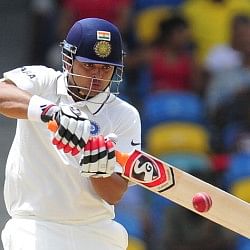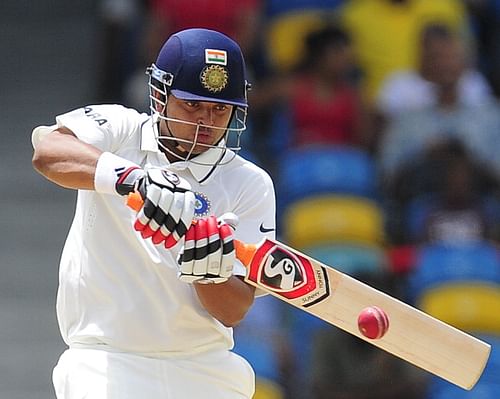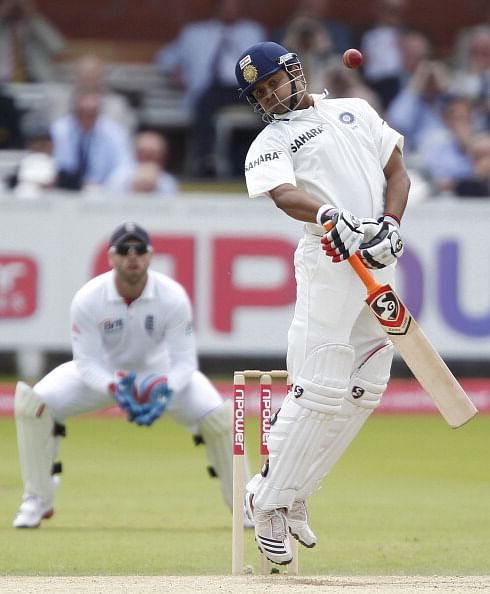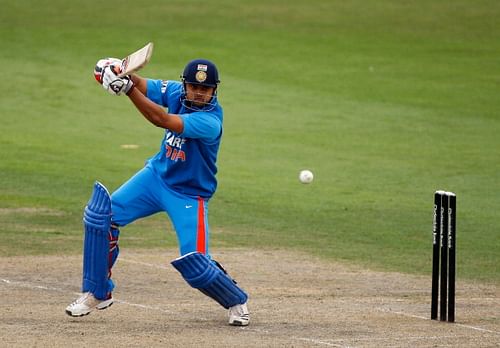
Suresh Raina - Hoicking the doubts over mid-wicket!

He can’t play the short ball. He doesn’t have sound technique. He lacks patience. He’s flashy outside the off stump. He is not Test match material – that’s Suresh Raina in a nutshell, or what he has been labelled as.
Even after a splendid show against England in the ODIs and an outstanding Irani Cup, the UP skipper has failed to convince the selectors, yet again. As far as scores are concerned, Raina is up there with the best this year, but when one thinks of him as a batsman, the image of him jumping awkwardly to evade a bouncer takes precedence over his well-timed cover drives. So it was not a surprise that his reputation preceded his performance, which in turn led to his omission.
31st March 2006, India vs England, Faridabad – India were 92/5 in the 24th over while chasing 226. With only MS Dhoni to come in, even the most loyal of supporters had given up on India. But one man didn’t. A five-feet someone jogged on to the field, took guard, adjusted his gear and got busy. He took a few brisk singles, sized up the situation and before anyone noticed, he was into the 40s. What followed was absolute brilliance. Along with Dhoni and Irfan Pathan, the powerful left-hander scripted one of the best revival acts in Indian cricket. The innings left fans startled, the media gushing and Andrew Flintoff going overboard with words like “fantastic” and “stunning”. That’s how Suresh Raina stamped his arrival in international cricket.
“A cricketer of such frightening potential that a nation’s collective frown about life after Sachin Tendulkar might even begin to ease…” – Lawrence Booth of The Guardian wrote about this young Indian when he burst on to the international scene with his aggressive batting and electric fielding skills. He even featured in Wisden’s list of 10 young cricketers to watch out for in the coming decade.

He began his Test career with a debut hundred against Sri Lanka, but his susceptibility against the short ball left him in the high seas in England. From there on, things went a bit pear-shaped for this immensely talented left hander. Instead of ruling the roost of Indian cricket, he’s now looked upon as a man who lost his way in the razzmatazz of the floodlit version of the game. Raina, like most young Indian batsmen, has failed to capitalize on the start he had in the international arena, and has been labelled as a second-tier cricketer for India. And that’s not entirely wrong because purely as a batsman, Raina has not taken his game to the next level. He’s still tagged as a T20 batsman who’s clueless whenever the blue uniform is replaced by white flannel.
To be entirely fair to him, he has not been a complete failure like Rohit Sharma. Suresh Raina is India’s best T20 batsman and is a mainstay in the ODI outfit. He has rescued India on several occasions, when the top order has toppled or when the asking-rate has risen beyond control. His fielding makes you proud as an Indian, and his commitment on the field is second to none.
However, there has been an air of mediocrity around him. He is not as gifted as Rohit Sharma, nor does he have the aura of Virat Kohli. He struggles in tough conditions, finds ugly ways to get out and has never looked a part of the Test community. He is one of those young men who have got into the circle of being good but not good enough. It’s addictive. Once you’re hooked, you’re hooked. Despite the aspirations of greatness, one succumbs to this horrible addiction.
Before the English arrived in India, Suresh Raina was quoted,
“I was there in England and I feel the pain of losing that series 0-4. I want to give some of that pain back…” He was not picked for the Tests, and the statement became a joke. Neither could he retract it, nor did his nephew come to his rescue.
Then came the ODI series, and signs of the “Raina rehabilitation program” emerged. England found out what the lefty from Ghaziabad really meant, as he walloped the ball to all corners of the park to grab the Man of the Series award. But it wasn’t the award that made this series special for him. He looked a changed cricketer. He looked patient, relaxed and willing to play the waiting game. The hurt of being left out was evident, and the going-hell-for-leather approach was replaced by measured aggression wrapped around with an air of solidity. The head was still, the feet moved in sync, the defence looked tight, and the shot selection had a stamp of contemplation.

The chinks are still there, and they will remain. All batsman in this world have had technical snags, and they have lived with it. If Saurav Ganguly and Steve Waugh were weighed down with the “perfume ball” syndrome, Sachin Tendulkar struggled against the incoming ones. Even Rahul Dravid’s head fell to the off-side during his early days. But they all dug their heels in and found ways to hide these gaffes effectively. At the highest level, the flaws in one’s technique are often overpowered by one’s temperament, else Sanath Jayasuriya and Virender Sehwag wouldn’t have had glittering Test records.
Raina, now, looks better equipped with his technique, and in his last few outings has hoicked the self-doubts of being ‘not good enough’ over mid-wicket. He now believes that he belongs at this level, and is ready to put in the hard yards to keep improving. His innings in the Irani Trophy oozed confidence, and he deserved to be in the squad against the Aussies. But Raina is one of those characters who won’t be pegged back by the decision, because he is a large-hearted cricketer who knows how to get up after landing on his face. He will keep his head down and keep grinding, because you can never be beaten if you refuse to quit. The selectors, however, have missed a trick, and they would be well advised to keep an eye on Suresh Raina because:
“If you’re lucky enough to find a guy with a lot of head and a lot of heart, he’s never going to come off of the field second.”
- Vince Lombardi